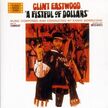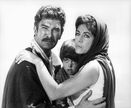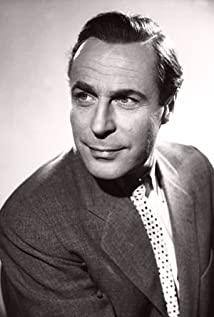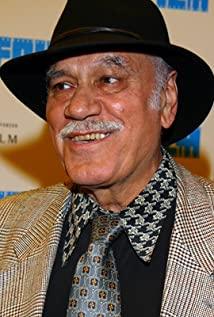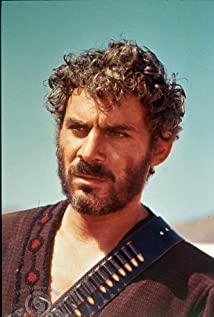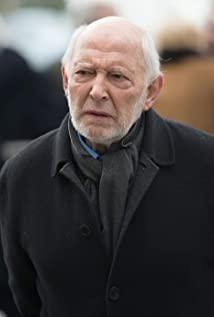Sergio Leon was born in Rome in 1929. His father is an Italian silent film director, and his mother is a theater film actor. He came from a family of movies, and he followed his father in filming in his early years, but he didn't gain much. He has benefited the most from his career as assistant directors following the Italian neo-realist director Desica and Comosini. The experience of working with directors such as Robert Wise, William Wheeler and other directors to shoot epic movies in Hollywood also laid a solid foundation for his film production. From 1959 to 1961, he shot his own two films "The End of Pompeii" and "The Colossus of Rhode Island", but as early as 25 years old, he once refused to direct the film's invitation on the grounds that the timing was not ripe enough. .
Sergio Leon has a soft spot for classic Hollywood Western movies in the 1930s, which seems to have brought him back to Rome in his childhood. American Westerns occupies a huge market in Europe, especially affecting a generation of young Italians who grew up under Mussolini. But American Western films have experienced its golden age and gradually began to decline in the 1950s. Although the total accounted for 34% of the released films, they were crude and boring and lost their former vitality. Between 1962 and 1964, Italy, Spain, and Germany made 25 westerns, which were called "Italian Westerns" by film critics. But in the eyes of many people, these films are just imitations of American traditional Western films. Until 1963, Leon was preparing to make the film "For A Little Money" adapted from Akira Kurosawa's film "Red Dead", which opened a new page for the film genre of "Italian Western".
The story structure of "For A Little Money" is roughly the same as that of Akira Kurosawa's film "Red Dead". It tells the story of the wandering wanderer dealing with two evil forces in the western town to rescue the residents of the town. Although Leon simply believes that the style and artistic conception of the two films are completely different, he went to court because of the copyright dispute. The tight production costs and 7 weeks of shooting time gave this film a lot of traces of low-cost production. But this film shows Sergio Leon’s strong Italian style when dealing with western themes, which makes it unique among Italian westerns and even American traditional westerns.
The film was shot in Emelia, southern Spain, and its open avenues and riverbeds have appeared in many films in Leon. The setting of the town was transformed by the designer Carlo Simi, who contributed to the style of Leon's film. The interior design expands the proportion of Mexican-style buildings, and the town is desolate and sparsely populated. It is very different from the bustling western towns in traditional western movies, full of the smell of killing and death. Excavating soil from the plains to modify the interior scenery, pretending to be a highway manager cutting down the dead trees needed in the scene of the farmer's backyard, Leon's seemingly crazy moves make the film enveloped in a unique and unified atmosphere.
The protagonist of the film is an unnamed guest who runs through the western films of Leon. He has a short beard, a cigar in his mouth, and a mysterious cloak. Such heroic images are rare in traditional Hollywood Western films. What's more, whether he is a hero or not requires the audience to judge carefully. The standard of behavior that distinguishes good from evil in Western Leon movies is a person's attitude towards children. Everyone is not just awe-inspiring, but those who beat up children and welcome them home with a slap are definitely more evil. In the subsequent film "Good, Evil, Ugly", Leon uses three simple adjectives to symbolize the three unnamed guests. However, as the plot develops and the character's personality is gradually revealed, the search for absolute good or absolute evil has been Becomes meaningless. Dirty and sloppy character styles, as well as good and evil character positioning, endow the film with a Leon-style western realism style.
Leon's "For A Little Money", "For More Money" and "Good, Evil, Ugly" constituted the "Dollar Trilogy" at the beginning of his creation, also known as the "Funker Trilogy". The protagonists are played by American actor Clint Eastwood. Most of the actors are from Italy, Spain, and Germany. Leon, who was born in Rome, doesn't speak English at all. He usually uses the method of personal demonstration when directing the actors. The only sentence he can speak in English is "Watch Me" and "Watch Me", which gives the characters in the film a Roman style. Traditional Western heroes turned into Roman liars. This is the influence of Italian culture on Leon's films. Leon’s western journey also led actor Clint Eastwood to the direction of directorship. He once paid tribute to Leon in the opening of his western film "Unforgivable".
One of Leon’s ideas for "For A Little Money" came from the 19th-century Italian folk puppet show. The troupe uses sticks to manipulate large iron puppets to perform in cities and villages. The repertoire revolves around the medieval hero story. Every place it goes, it will be filled and improved based on the original story model according to the local people's conditions. Just as the mayor of Sicily, bankers and other characters appeared in "Roland's Song", the racial struggle of the Spanish villains also appeared in "The Wilderness"-style Italian westerns. Dolls, cemeteries, clowns, naive villains, Catholic families, the Last Supper, opera-style duel scenes... The Sicilian puppet show is a reference for Leon’s Italian-style improvement of Hollywood Westerns.
Most of the large-scale historical films that Leon took part in during the 1950s and 1960s were deified stories with Greek and Roman backgrounds, which made his film style extremely masculine and tough. The male characters he created are full of mysterious and legendary colors, but it is difficult for the female characters to truly integrate into the film, and most of them use simplistic processing. There is no love story and no romance in his film, which makes his film rugged and robust, full of cigar and spirits smell, which also caters to the taste of the main audience in southern Italy. Leon's romance is not in chivalrous tenderness, but between heaven and earth.
Leon is good at using close-ups to show the character's psychology, especially focusing the camera on the character's face and eyes. Before the protagonist duel, the camera pans slowly, creating a tense and solemn atmosphere. In the cemetery duel in "Good, Evil, Ugly", the camera pans quickly following the run of "ugly", pushing the film's emotions to a climax. Leon is good at cross-switching bipolar lenses. The audiovisual is both exaggerated and cautious, unexpected and reasonable, and always brings fresh and exciting feelings to the audience. Due to the influence of Italian neorealism, Leon pays particular attention to the role of sound in the film. His films are full of distorted natural sounds, gunshots, horseshoes, bells, and whistles, giving the film the adult style of the sixties. The collaboration with the Italian composer Yanoni Moriconi also made the film's soundtrack a fusion of Italian music, James Bond music, Gypsy stray music, Mexican mourning and other elements. Leon and Moriconi adapted their beloved theme song Deguello for "Slaying the Dragon with the Fear" and became the main theme in many Leon films. This is like a death song, echoing at the end of Leon's film, the protagonist rides a horse and disappears between the vast world to create one new legend after another.
Following the "Dollar Trilogy", Leon’s personal style has matured day by day, and he has filmed "Once Upon a Time in the West", "Revolutionary History", and "Once Upon a Time in America" as his "American Trilogy", also known as "The Past Three." song". In the "American Trilogy", Leon's interest gradually shifted to the reproduction of magnificent scenes and complex narratives in time and space. Although he was never nominated for an Oscar in his life, he was decisive in the development and maturity of Italian Westerns. Contribution. His Italian westerns have an unrepeatable and timeless artistic value.
Some people commented on traditional westerns like this, "a horseback opera with no gaze but only arias". Leon has no prejudice against traditional westerns. He personally likes John Ford, the director of Hollywood westerns, but he criticizes the optimism in his films. He said, "In Ford's film, the protagonist opens the window and sees the horizon full of hope; in my film, they have to worry about whether they will be hit by a bullet in the center of their eyebrows." Maybe Leon's film is too dirty Dirty, too violent, too risky in morals, but all of this constitutes one thing, legend. Like the James Bond films of the 1960s, Leon called his films "adult fairy tales."
French film critic Bazin called American Western films an "eternal legend". After all, American Western films are a genre of mythological modification based on history, and are essentially simple realism. Italy has no west and frontiers, no gold mines and pioneers. It can be said that Italian westerns do not come from history. Italian filmmakers regard western films as myths, and what Sergio Leon did is actually writing myths and telling myths about myths.
View more about A Fistful of Dollars reviews





